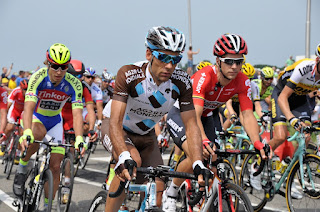Perceived Effort: Cyclists can gauge their cadence based on how their pedaling feels. They can develop a sense of rhythm and effort by paying attention to the speed and fluidity of their leg movements. This method is subjective and requires experience and self-awareness.
Counting Pedal Strokes: Cyclists can manually count their pedal strokes for a predetermined period, such as 15 seconds, and then multiply it by four to calculate their cadence per minute. This method can be challenging to maintain accuracy during high-intensity efforts.
Bike Computers: Many cyclists use bike computers or GPS devices that provide real-time cadence data. These devices use sensors, such as a magnet and a cadence sensor, to track pedal revolutions and display the cadence on a screen. This method allows for continuous monitoring of cadence throughout the ride.
Cadence Sensors: Cyclists can install separate cadence sensors on their bicycles. These sensors are attached to the crank arm or pedal spindle and wirelessly transmit cadence data to a compatible cycling computer or smartphone app.
Power Meters: Advanced cyclists often use power meters, which measure the force applied to the pedals, along with cadence. Power meters provide accurate and comprehensive data on pedaling dynamics, allowing cyclists to optimize their cadence for power output and efficiency.
Spinning Classes: Indoor cycling classes or spinning sessions are often led by instructors who guide participants to maintain specific cadences. Cyclists can use these classes to develop a sense of different cadence ranges and find their preferred rhythm.
It's important to note that the ideal cadence can vary among cyclists and may depend on factors such as the terrain and the rider's physiological characteristics. Generally, a cadence range of 80-100 revolutions per minute (RPM) is considered a good starting point for most cyclists. However, individual preferences and performance goals may lead to variations in optimal cadence.
Experimenting with different cadences during training rides and paying attention to how it affects power output, comfort, and efficiency can help cyclists determine their ideal cadence. Regular practice and a focus on pedaling technique can lead to improved cadence control and overall cycling performance.
Photo: Pixabay (free)

No comments:
Post a Comment
Thanks for your comment.